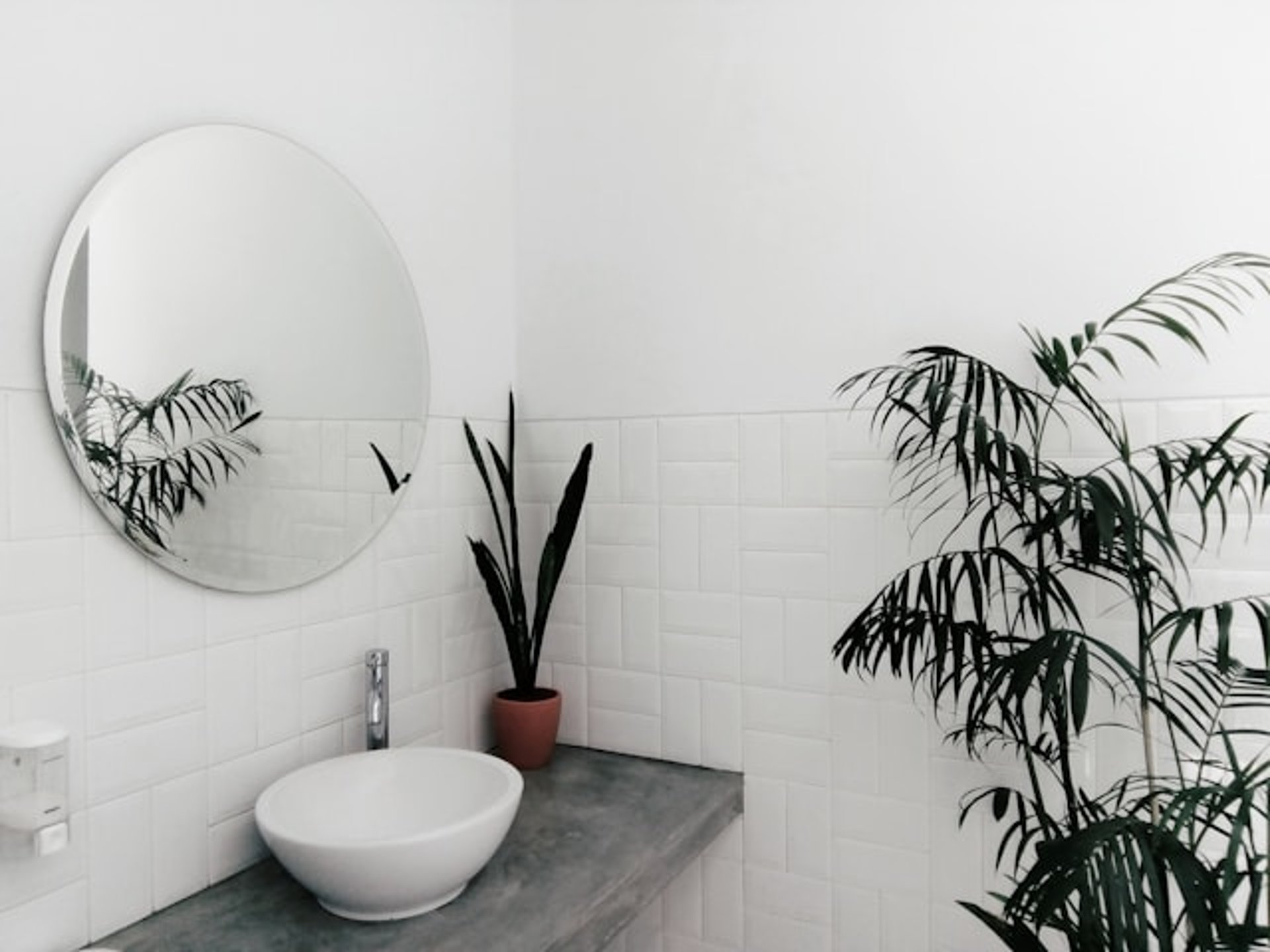How to Get Rid of Bad Smell From Your Bathroom Drain
Tired of unpleasant odors in your bathroom? Learn how to get rid of bad smell from your bathroom drain with simple, effective, and budget-friendly solutions.
MOVING & HOME TIPS
7/29/20256 min read

How To Keep Your Bathroom Drain Free From Bad Odors
Nobody enjoys walking into the bathroom and being greeted by a strange, unpleasant smell. It’s the kind of odor that instantly makes you frown, wrinkle your nose, and wonder if you cleaned properly the last time. The comforting news is that in most cases, the smell is coming from the drain, and you can take care of it on your own. You don’t need to call a plumber, and you won’t have to buy any expensive equipment either.
In this detailed guide, we’ll go over what causes this type of odor, what you can do immediately to fix it, and how you can prevent it from returning in the future.
What Causes the Smell in the First Place?
Before you jump into scrubbing everything down, it’s worth taking a moment to understand what might be causing the odor. Most of the time, foul smells from bathroom drains are due to a few common problems that develop gradually.
Buildup of Hair and Dirt
Over time, hair, bits of soap, toothpaste residue, and other grime begin to collect inside the drainpipes. These particles stick together and form a sticky, gunky mess. This mess becomes the perfect breeding ground for bacteria. And wherever bacteria start to thrive, unpleasant smells follow closely behind.
Dry P-Trap
That curved section of pipe located beneath your sink or shower is called the P-trap. It is designed to hold a small amount of water at all times. This water barrier keeps sewer gas from rising into your bathroom. However, if the water evaporates due to lack of use, it no longer blocks the gas. The smell then enters the bathroom without any obstruction.
Mold and Mildew
Bathrooms tend to stay damp, especially in and around drains. If the drain is dirty and constantly moist, mold can begin to grow. Mold and mildew have a strong, musty smell that becomes noticeable very quickly, even if the growth is minimal.
Clogged Vent Pipe
Every home plumbing system includes a venting pipe, which allows air to circulate properly through the pipes. This keeps water flowing and gas moving in the right direction. If this vent becomes blocked with leaves, dirt, or even a bird’s nest, sewer gas can be forced back down through the pipes and into your bathroom.
Now that you have a clearer idea of what might be happening inside your plumbing, let’s focus on the steps you can take to eliminate the smell and keep your bathroom fresh.
Step One: Give the Drain a Deep Clean
We’ll start with a straightforward cleaning routine that doesn’t require any complex tools or expensive products. You probably already have everything you need at home.
What You’ll Need:
Baking soda
White vinegar
Boiling water
An old toothbrush or a small cleaning brush
A wire or drain snake (optional)
Step-by-Step Cleaning:
Boil a kettle of water and carefully pour it down the drain. This helps to loosen any grease and soap residue that may be stuck inside.
Next, measure out half a cup of baking soda and pour it into the drain.
Follow that with one full cup of white vinegar. You’ll notice it begins to bubble and fizz. This reaction helps break apart gunk and bacteria buildup. Let this mixture sit for ten to fifteen minutes.
Boil another kettle of water and pour it down the drain to flush everything away.
If you suspect a clog or still notice a strong odor, use a drain snake or piece of stiff wire to pull out hair and debris.
Finally, scrub around the edge of the drain opening with a toothbrush. Focus especially on visible grime that may be trapped around the rim.
Repeat this process weekly if the smell tends to return. Keeping the drain clean on a regular basis is one of the easiest ways to stop bad odors from taking over.
Step Two: Make Sure the P-Trap Has Water
If the drain hasn’t been used in a while, the water inside the P-trap may have evaporated. This allows sewer gases to rise and enter the bathroom. Fixing this only takes a minute.
What To Do:
Turn on the tap and let the water run down the drain for about a minute. This will refill the P-trap and block any rising gases.
After the water has run, pour one tablespoon of cooking oil into the drain. The oil creates a thin layer that slows down evaporation, helping the water stay in the pipe for longer.
This trick works particularly well in guest bathrooms or sinks that are rarely used.
Step Three: Try a Natural Enzyme-Based Cleaner
If the baking soda and vinegar method doesn’t completely remove the odor, you can try using a natural enzymatic cleaner. These cleaners contain live bacteria that feed on the organic waste stuck in your pipes, breaking it down gradually.
Look for a product labeled as “enzymatic” or “biological.” Make sure it is safe for bathroom plumbing and septic systems. These cleaners are usually available in supermarkets or hardware stores.
Use the product at night before going to bed. Pour it into the drain and let it sit overnight. Avoid running any water afterward so the cleaner has time to work deeply.
Unlike harsh chemical products, enzyme cleaners are gentle on your plumbing. They do not corrode or weaken the pipes. While they take longer to show results, they offer a more thorough and lasting solution.
Step Four: Inspect the Plumbing Vent on the Roof
This step may require some caution and a bit of height. The plumbing vent pipe is often located on the roof. If it becomes clogged, sewer gas will no longer exit the house properly. Instead, it might find its way back into your bathroom through the drains.
Here’s How To Check:
Carefully climb up to the roof using a sturdy ladder. If you are uncomfortable with heights, ask someone for help.
Use a flashlight to peer into the vent pipe. If you see leaves, nests, or dirt blocking the opening, try flushing it with a garden hose.
If that doesn’t work, you can try using a long drain snake to remove the blockage. If the clog remains, it may be time to call a professional plumber.
Checking the vent pipe is not something you’ll need to do often, but it can be helpful when nothing else seems to fix the odor problem.
Step Five: Keep the Drain Smelling Fresh With Routine Care
Once your drain is clean and the smell is gone, keep it that way with some easy maintenance habits. Regular attention can prevent the problem from coming back.
Helpful Tips
Pour boiling water down the drain once a week to keep oils and debris from building up.
Use the baking soda and vinegar method once a month as a deeper clean.
After each cleaning, add a few drops of essential oil like tea tree or peppermint into the drain. These oils have natural antibacterial properties and leave a fresh scent.
Turn on the bathroom exhaust fan for fifteen to twenty minutes after every shower. This helps reduce moisture, which mold and bacteria love.
Extra Advice for Specific Bathroom Drains
Not all drains are exactly the same. Each one has its own quirks and potential issues. Before applying a solution, take a moment to consider the type of drain and how it is used on a daily basis. Follow these tips to address specific drain problems.
Shower Drain Odors
Shower drains often get clogged with hair. Use a hair catcher or a small mesh screen over the drain to trap hair before it goes into the pipe. Clean the catcher every few days to prevent buildup.
You can also remove the drain cover and clean underneath. Old soap scum and shampoo residue often hide there, contributing to the smell.
Sink Drain Smells
If the smell seems to be coming from your bathroom sink, check the cabinet underneath. Look for any leaks or loose connections around the P-trap. Tighten the fittings and make sure the trap holds water.
Toilet Odors
If the smell is strongest near the base of the toilet, the wax ring seal might be worn out or cracked. This ring is what seals the toilet to the plumbing system and prevents gas from escaping.
Replacing the wax ring is possible to do yourself, but if you’re unsure or uncomfortable, it’s completely fine to hire a plumber.
When You Should Consider Calling a Professional
You’ve tried boiling water, baking soda, enzymatic cleaner, and even climbed up to check the roof vent. But the smell is still there. In this case, it may be time to call a plumber.
Here are signs that professional help might be needed:
The odor continues even after trying all recommended solutions.
Several drains throughout the house are slow at the same time.
You hear gurgling or bubbling sounds coming from the pipes.
Water backs up into the sink or shower.
You suspect there may be a blockage in the main sewer line.
Plumbers have tools like inspection cameras and high-pressure cleaners that can reach areas deep within the plumbing system that you cannot access at home.
Final Thoughts
Living with a smelly bathroom drain does not have to be your reality. In most cases, the problem is easy to fix and does not require much money. A little hot water, a few household ingredients, and some regular care are usually all it takes.
The best approach is to begin with the simplest steps and observe what changes. If the problem is caused by buildup or a dry trap, you should notice a big improvement quickly. If the odor persists, at least you’ve already done all the groundwork before seeking professional assistance.
There is no need to hold your breath when walking into the bathroom anymore. With a bit of time and regularity, you can take control and enjoy a fresh, clean space every single day.
Explore
Welcome to Stay Curious – the blog where questions never get old and answers are always a little bit unexpected. Here, we challenge the status quo, dig into the weird and wonderful, and offer insights that might just make you think, “Why didn’t I know this sooner?”
From quirky facts to deep dives into the everyday mysteries of life, we’re all about satisfying that itch for knowledge you didn’t even know you had.
So, go ahead—stay curious. We promise it’ll be worth your while. Or, you know, not.
Contribute
Learn
ask.staycurious@gmail.com
© 2025. All rights reserved.
We welcome guest posts on business, tech, travel, finance, lifestyle, career, relocation, and home improvement. Submissions must be original, unpublished (online), at least 800 words, and written in English.
Ready to contribute? Contact us with your ideas!
